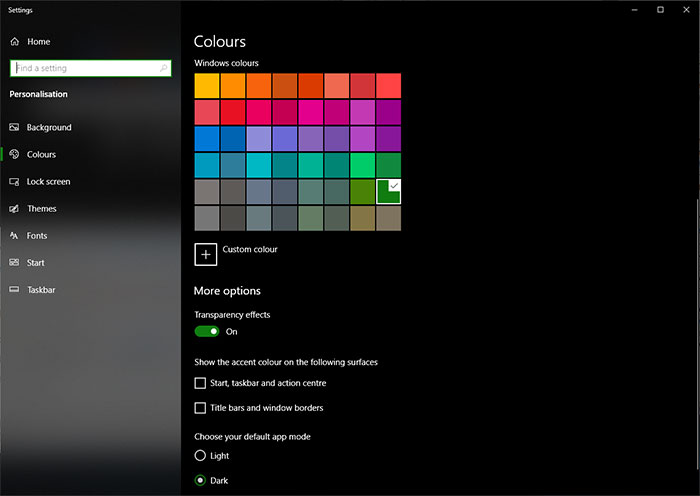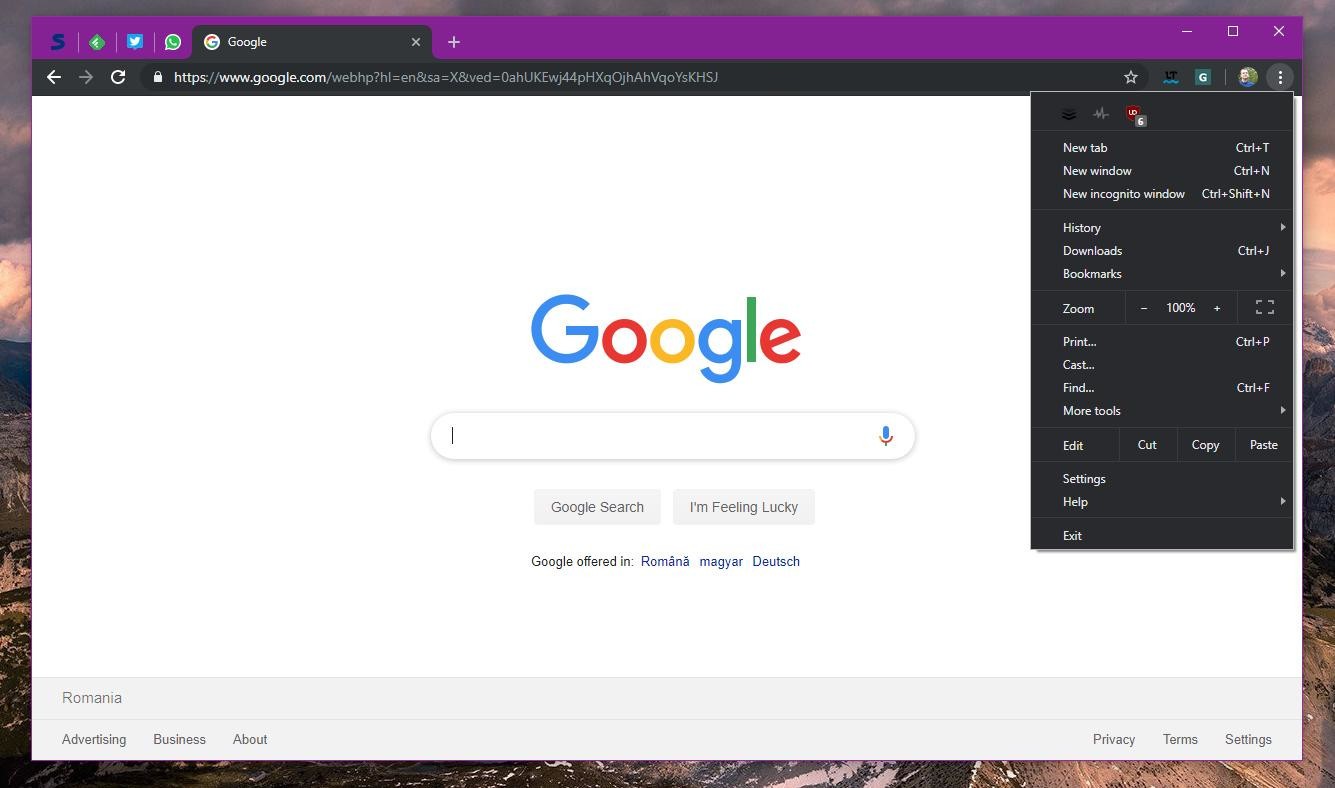- Mode Dark Google Chrome
- Dark Google Chrome Theme
- Google Chrome Dark Mode Download
- Dark Google Chrome Theme
- Google Search Dark Theme
Dark mode, also known as Chrome night mode, can be enabled automatically, but the required settings can also be selected manually. This is true for both computers and smartphones. It is also possible on tablets – the mode is enabled in the same way as on a smartphone. Unfortunately, it cannot be. Dark mode for those long nights working on Google Docs! This extension changes the style of Google Docs to a dark theme that is easier on the eyes and looks cooler:) The dark mode and page color can be toggled on and off by clicking on the extension icon. 1.2.2 Update: - Fixed word counter not displaying correctly.
RELATED: How to Enable Google Chrome's Dark Mode on Windows 10. Apply a Dark Theme. Chrome supports user-created themes, which you can download from the Chrome Web Store. To give Chrome a dark interface, all you have to do is install a dark theme. Google even provides a helpful collection of editor-selected dark themes. This will give your. Disable Google Chrome extensions. Not all extensions are equal, and sometimes, extension. Google Chrome already has a built-in dark mode. Websites can automatically switch to dark mode if you’re using it, assuming the site supports this. But most websites don’t have automatic dark mode—or any dark mode.
The dark mode concept is becoming increasingly popular. For example, Apple introduced it for iPhones and iPads in iOS 13. For a long time the world’s most popular browser, Google Chrome, did not have its own dark mode. Users could get a Chrome dark theme using extensions, but not through the browser itself.
Since Version 74, this has all changed. Dark mode, also known as Chrome night mode, can be enabled automatically, but the required settings can also be selected manually. This is true for both computers and smartphones. It is also possible on tablets – the mode is enabled in the same way as on a smartphone. Unfortunately, it cannot be enabled manually in iOS. Instead, it has to be enabled as a system-wide setting.
- Enabling dark mode automatically throughout your operating system
- Enabling Chrome dark mode manually
Enabling dark mode automatically throughout your operating system
If you prefer to enable it automatically, you need to launch Chrome dark mode by changing operating system settings. But be careful: If you do this, you will not only enable the Chrome dark theme, you will enable dark mode for your entire device. Your mail folder, the default calendar, and all system menus will appear in dark mode. If you don’t want this and are only interested in Google Chrome night mode, you will need to enable it manually.
Automatically enabling Chrome dark mode in Windows 10
You can enable the Windows 10 dark mode using the system settings. One way to open these is to use the key combination Windows symbol + I. Alternatively, you can simply type “Windows Settings” in the Cortana search box. In the settings, first, select “Personalization” and then “Colors”. You can then select “Dark”. Night mode is now enabled across the system – this includes Chrome dark mode.
Automatically enabling Chrome dark mode in macOS
In macOS, first, open “Settings”. You will find the gray gear button in the dock by default. Alternatively, you can click on the Apple icon in the header and then select “System settings”. Now choose “General” from the menu. You can then select between three options under “Appearance”. One of them is “Dark”. Dark mode is then enabled across the system – including Google Chrome dark mode.
If you select “Auto”, dark mode is enabled and disabled across the system depending on the time of day. Of course, this also applies to Chrome dark mode.
Enabling dark mode in Android
System-wide dark mode was introduced from Android 10. For older operating system versions you can download apps that initiate dark mode. As suppliers of Android devices generally superimpose a custom user interface on the standard software, it is possible that the following explanations do not exactly correspond to your smartphone. We will demonstrate how enabling dark mode works in Android without corresponding apps – that is, in Android as supplied by Google for Pixel devices.
First of all, you need to open the system settings by tapping the circular gear icon. Then select “Settings”. Here, you can enable or disable a “dark theme”, which includes Chrome dark mode.
Enabling dark mode in iOS
As outlined above, dark mode only works on devices equipped with iOS 13 (iPad OS 13). Older versions of the operating system do not offer a dark mode. Go to “Settings” (gray gear button) and then select “Display & Brightness”. Here, you can choose between “Light” and “Dark” options. If you select “Dark”, dark mode will be enabled across the system including Chrome dark mode.
Enabling Chrome dark mode manually
You can also use dark mode in Chrome without your entire device having a dark appearance. To do this, you have to adjust the setting directly in Chrome.
Enabling Chrome dark mode manually in Windows 10
To manually enable Google Chrome dark mode, you need to set up a “Start parameter”. Open Explorer and search for the Google Chrome folder. Here, you will see the Chrome icon. Right-click it. Then select “Send to – Desktop”. This creates a shortcut on the desktop.
You can rename this shortcut if you want to. To do this, select the icon by clicking it and then press F2. Give your shortcut a name such as “Chrome dark mode”. Then right-click the icon and select “Properties” in the pop-up menu. Go to the “Shortcut” tab. In the “Target” field, add the following words (without quotation marks): “force-dark-mode”. Chrome dark mode is now enabled.
Enabling Chrome dark mode manually in macOS

In macOS, you will need an extension to enable Chrome dark mode, for example, Dark Reader which is available for free. Open the main menu by clicking on the three dots on the far right next to the address bar. Then select “More tools” followed by “Extensions”. Enter “Dark Reader” in the search box and install the extension.
Enabling Chrome dark mode manually in Android and iOS
The smartphone operating systems iOS and Android do not yet offer an official method to manually enable Chrome dark mode. However, there is a hack for Android. Open Google Chrome and enter the following command in the address bar: chrome://flags. This opens a search box, in which you need to enter the following command: #enable-android-web-contents-dark-mode. Alternatively, you can also search for the following flag: force-dark-mode. Change the setting from “Default” to “Enabled”.
There’s still no unified control to turn on dark mode across all your devices for Chrome. Instead, you’ll have to use a different method for each operating system.
If you already know what dark mode is and you just want to turn it on, click your OS to get started:
In case you’re less familiar, there’s more information on how dark mode works and why you should use it at the bottom of this post.
Let’s jump right in.
Enable Dark Mode for Windows 10
Windows 10 users can switch dark mode on and off in Chrome without changing their OS settings.
If you want to turn on dark mode OS-wide, you can do so in two simple steps:
- Go to Settings in the Windows menu and select Personalization, then select Colors.
- In the Choose your default app mode, select Dark. That’s it, you’re done.

Chrome automatically themes itself to match the dark mode you’ve enabled for your whole OS. Several other apps will switch to dark mode too.
But what if you don’t want to turn everything dark—just Chrome?
First, find the shortcut you’d normally use to launch Chrome and right-click it. It might be on your desktop or in your taskbar.
Next, select Properties and you’ll see the Target box: the text that describes where Chrome is stored on your PC. It will probably look something like this:
C:Program Files (x86)GoogleChromeApplicationchrome.exe
All you’re going to do is add this text to the end of that Target box:
--force-dark-mode
So the result looks like this:
C:Program Files (x86)GoogleChromeApplicationchrome.exe --force-dark-mode
Your Chrome installation might be somewhere other than the C drive, or the Target text might look different. Just make sure there’s a space between the .exe and the double hyphen before “force-dark-mode,” or it won’t work. Click OK to save changes.
Finally, close Chrome and reopen it, and you should have dark Chrome and light Windows.


To undo this, right-click on the shortcut, return to the Target box, and remove the “–force-dark-mode” text.
Enable Dark Mode for Mac OS
Mac OS Mojave has a system-wide dark mode. Enable that and Chrome will automatically self-theme to match it.
To enable dark mode in Mojave:
- Open System Preferences and select General.
- At the top of the General Preferences menu is the toggle for Appearance, with two options: Light and Dark. Select Dark and you’re done.
If you’re using an older version of OSX, you can’t enable a system-wide dark mode and there doesn’t seem to be an independent toggle. Take a look further down this post for information on how to use themes and extensions to achieve a dark Chrome. If you really want, you can use the #enable-force-dark flag in Chrome Canary, but that involves a big sacrifice in stability.
Enable Dark Mode for Android
If you’re running Android 10, dark mode is supported by your phone’s OS and you should be able to simply turn it on. Just open the Settings menu, choose Themes, and select Dark.
If you’re running an earlier version of Android, you’ll need to use Chrome Flags to turn it on.
To do that:
- Open Chrome and type chrome://flags/ into the address bar.
- When Flags opens, search for “dark mode” and you’ll get two results: Android web contents dark mode at #enable-android-web-contents-dark-mode, and Android Chrome UI dark mode at #enable-android-night-mode. You will need to enable both to get a satisfactory dark browser.
If you pick the first option, it changes how Chrome interacts with websites. With it enabled, Chrome will check whether there’s a dark version of each website you visit and display it if there is. If there isn’t, Chrome will simply invert the site’s colors. Enable this option, restart Chrome, and you’ll get a dark browsing experience with a light browser UI.
The second option, Chrome UI dark mode, lets you darken the browser interface itself. To set this up:
- Enable the flag and then restart Chrome and open Settings.
- Go to Advanced and open the Themes menu. (If you don’t see the Themes menu, update Chrome. Themes are a recent addition to the app.)
- Select Dark and Chrome’s own UI will go dark, though search results and websites will still be light.
It’s worth remembering that flags are experimental and might not always work.
For example, even with both dark mode flags enabled, you might find that some websites still display elements of their pages in light colors. Right now there doesn’t seem to be a solution to this.
How to enable dark mode for iOS
iOS 13 users have a system-wide dark mode to which Chrome will self-theme once it’s enabled. You might already have this. Apple doesn’t always alert iOS users of new features if they’re upgrading an existing iOS install. So to find out, go to Settings > General > About > Version. If you have iOS 13 you can enable the system-wide dark mode.

To turn it on:
- Open your Control Center and hold down the Brightness indicator: the icon with the sun symbol next to the on-screen volume control.
- A full-screen control interface will pop up, with an Appearance toggle in the bottom left of the screen. By default it’s set to Light; tap it to toggle to dark mode.
If you have an earlier version of iOS you can still enable a form of dark mode. To do that:
- Go to Settings on your iPhone or iPad, scroll down to General, and select Accessibility.
- Select Display Accommodation, then Invert Colors.
- Choose Smart Invert to enable dark mode across the system, including Chrome.
There’s no Chrome-based dark mode control for iOS. If you can’t get a satisfactory dark browsing experience using the control panel on your iPad or iPhone, it might be time to consider an extension.
Mode Dark Google Chrome
What is dark mode?
Dark mode flips the colors you’re used to seeing on your screen and turns the backgrounds dark.
Here’s Chrome in normal, light mode:
The same page in dark mode:
Flipping Chrome’s UI to dark mode doesn’t always flip the websites you visit. That depends on whether they have a dark mode too. If their developers haven’t created one, Chrome won’t automatically display one. You can get around that with a Chrome extension.
Why use dark mode?
Dark mode is better for your eyes if you spend a long time looking at screens. Bright screens can make your eyes feel tired. There’s also evidence that exposure to blue light causes irreversible eye damage over time, as well as messing with your circadian rhythm and spoiling your sleep pattern.
Dark Google Chrome Theme
Dark mode can also make it easier to focus on the screen and to read text, and can improve battery life in mobile devices with OLED screens.
For most users, dark mode seems paradoxically brighter. You can pick out what’s happening on the screen more easily. At the same time, your screen will produce less light in general, saving your battery and your eyes.
Google Chrome Dark Mode Download
Other options for using a “dark mode”
Chrome themes and extensions are designed to import third-party functionality into Chrome. Dark themes have been available for a long time, but they typically affect only Chrome’s UI: the browser will look dark but all the websites you visit will still be light.
Some extensions offer something nearer to a true dark mode, inverting color palettes and muting them. Or selecting the dark versions of websites you visit. It’s worth checking out Dark Theme for Chrome, which automatically selects the dark or nighttime version of websites you visit.
Dark Google Chrome Theme
We’ve found Dark Reader useful too. Unlike Dark Theme, which relies on the websites you visit to provide it with dark themes, Dark Reader recasts the color schemes of all the websites you visit and lets you control the color parameters yourself, right in the browser.
Some systems allow a workaround. For example, if you’re a Mac user, you can achieve a system-wide dark mode using Night Shift in Displays alongside a Chrome Theme.
Google Search Dark Theme
While a combination of extensions, themes, and OS workarounds can deliver something close to a dark mode, there’s a reason Chrome rolled out its own. This MacGyver approach always felt like it was more trouble than it was worth, and left users concerned that new Chrome updates could stop their dark mode tools from working properly. If you can set up dark mode natively, that’s the best option.
